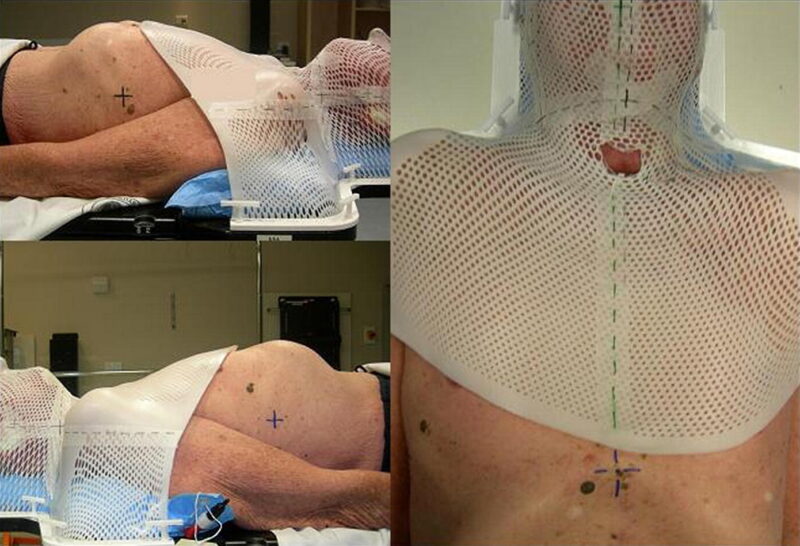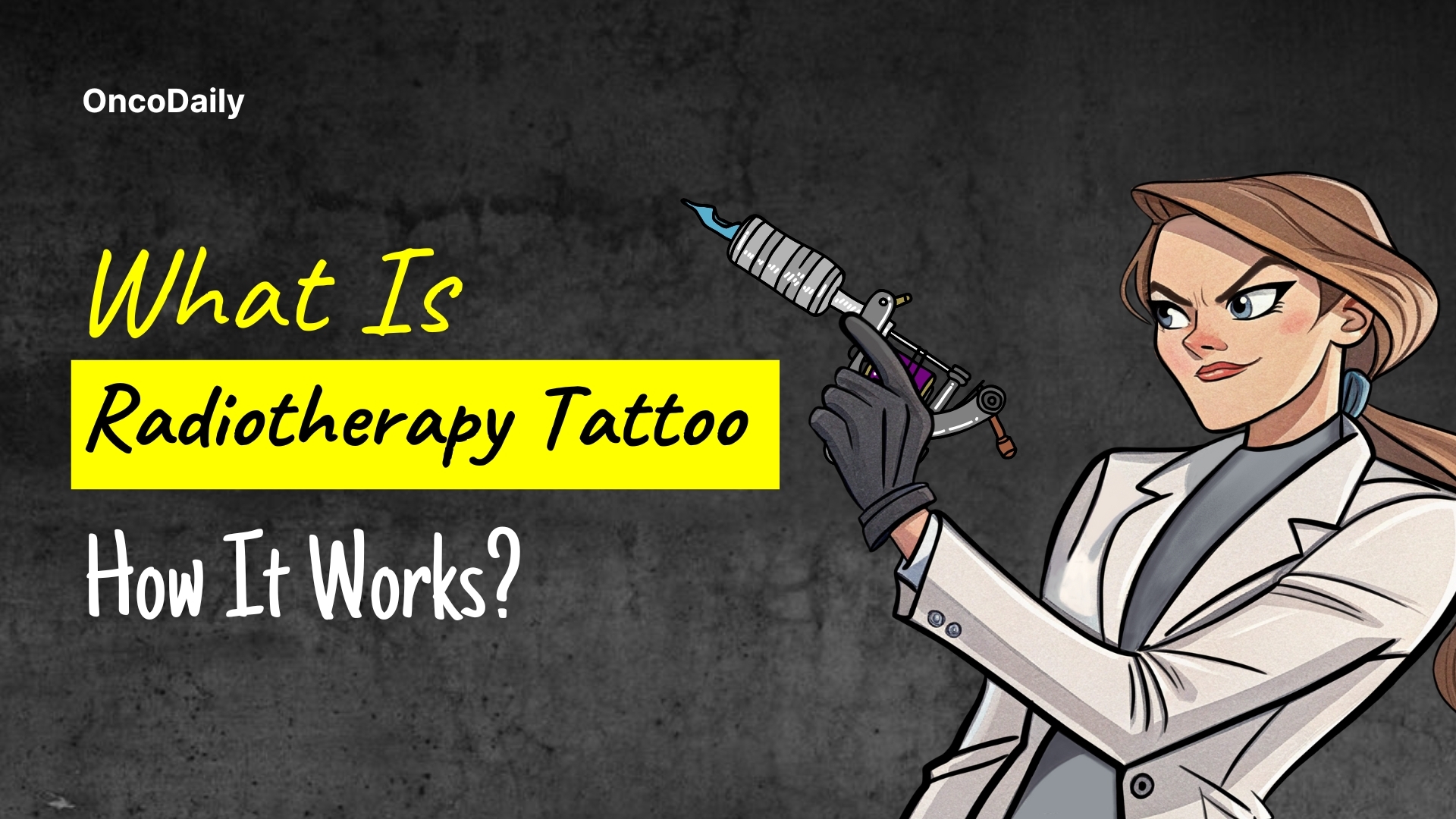radiotherapy tattoo ideasRadiotherapy tattoos, also known as radiation alignment tattoos or cancer treatment tattoos, are small, permanent marks made on a patient’s skin to ensure accurate positioning during radiation therapy. These tiny tattoos, often no larger than a pinhead, serve as visual reference points for radiation therapists to align the radiation beam precisely to the target area. Radiotherapy tattoos play a important role in delivering accurate and effective radiation therapy. By providing precise alignment, these tattoos help minimize damage to healthy tissue while maximizing the destruction of cancer cells.
Radiotherapy tattoos are small, permanent marks made on a patient’s skin using a needle and ink. These tiny marks serve as visual reference points for radiation therapists to precisely align the radiation beam during treatment.

source: www. jmirs.org
How Does a Radiotherapy Tattoo Work?
Tattoo Placement
During the initial planning phase, a radiation oncologist determines the exact location for the tattoos. The skin is cleaned with alcohol to ensure a sterile environment, and a small amount of ink is applied to the marked area. A tiny needle is then used to prick the skin, depositing the ink into the top layer.
Alignment During Treatment
Patient Positioning: The patient is positioned on the treatment table. The radiation therapist visually aligns the patient’s tattoos with laser marks on the treatment machine. The radiation beam is then directed to the target area, guided by the alignment of the tattoos.
Permanence and Alternatives
Radiotherapy tattoos are designed to be permanent, ensuring consistent accuracy throughout the entire treatment course. However, some patients may prefer temporary alternatives, such as Henna Tattoos, which can be applied to the skin but may fade over time, requiring frequent reapplication.
What Are the Main Types of Radiotherapy Tattoos?
Radiotherapy tattoos are essential for precise radiation delivery, but the types of tattoos and their impact on patients vary.
Permanent Ink Tattoos
Small, permanent marks made with a needle and ink. They are widely used for various cancer types, including breast, brain, and head/neck cancers.
Pros: Highly accurate and consistent.
Cons: Permanent, can be a source of anxiety and body image concerns for some patients.
Temporary Skin Markers
Non-permanent markings using markers or henna. They are less common and often used as a temporary alternative to permanent tattoos or in specific cases.
Pros: Less invasive and avoids permanent marks.
Cons: Can fade or smudge, requiring frequent reapplication, which may affect treatment accuracy.
Radiotherapy Tattoo Side Effects: What Should You Expect?
How to Prepare for a Radiotherapy Tattoo Session?
The Process
Your radiation oncologist will discuss the need for tattoos and the specific locations where they will be placed. The area to be tattooed will be cleaned with alcohol to ensure a sterile environment, and a small amount of ink will be applied to the skin. A tiny needle will then prick the skin, depositing the ink into the top layer.
What to Expect
The tattooing process is typically quick, taking only a few minutes per tattoo. You may experience a slight prick or sting, similar to a mosquito bite. The tattooed area may be slightly tender or red for a short time, so it’s important to keep it clean and dry to minimize discomfort.
Tips for Managing Anxiety
Discuss any concerns or anxieties with your radiation oncologist. Understanding why the tattoos are necessary can help alleviate anxiety. Techniques like deep breathing or meditation can help you stay calm during the procedure. If possible, consider discussing alternative options like temporary skin markers with your doctor, though permanent tattoos are often preferred for their accuracy.
Managing the Psychological Impact of Radiotherapy Tattoos
For many cancer survivors, the physical and emotional toll of treatment can be significant. The addition of permanent radiotherapy tattoos can further exacerbate these challenges, serving as a constant reminder of the past.
Understanding the Emotional Impact
The visibility of the tattoos, especially in prominent areas, can negatively impact body image and self-esteem. The permanent nature of the tattoos can trigger anxiety and stress, particularly for those who prefer to move on from their cancer journey. In some cultures, tattoos may carry social stigma, leading to feelings of shame or embarrassment.
Acceptance and Mindfulness
View the tattoos as symbols of strength and resilience. Practice mindfulness techniques like meditation and yoga to reduce stress and anxiety.
Seek Support
Connect with others who have undergone similar experiences. Consider seeking professional help to address emotional challenges. Share your feelings with family and friends.
Camouflage Techniques
Choose clothing that can discreetly cover the tattoos. Use makeup to minimize the visibility of the tattoos. Consult a dermatologist to explore options like laser removal or dermabrasion, though these may not be suitable for everyone.
Positive Reframing
Shift your focus to the future and the positive outcomes of treatment. Celebrate the journey and the strength you’ve gained.
How Radiotherapy Tattoos Are Performed
Radiotherapy tattoos are small, permanent marks placed on the skin to ensure accurate radiation therapy treatment. Here’s a step-by-step breakdown of the process:
Marking the Skin
The radiation oncologist determines the precise locations for the tattoos based on the treatment plan. Using a marker or laser, the therapist marks the skin where the tattoos will be placed.
Skin Preparation
The marked area is cleaned with alcohol to ensure a sterile environment.
Ink Application
A small drop of ink is placed on the marked skin.
Tattooing
A tiny needle is used to prick the skin, depositing the ink into the top layer. Each tattoo is typically about the size of a pinhead.
What to Expect During the Process
The procedure is generally painless, but you might feel a slight prick or sting. The entire process for each tattoo usually takes only a few minutes. The tattooed area may be slightly red or tender for a short time.
Important Considerations
Radiotherapy tattoos are permanent, so it’s important to be aware of their long-term implications. Precise placement of the tattoos is crucial for accurate radiation therapy. While the procedure is generally well-tolerated, it’s essential to communicate any concerns with your healthcare provider.
Comparison: Radiotherapy Tattoos vs. Tattoo-Less Systems
Advantages
Decades of use have demonstrated their effectiveness in ensuring precise radiation delivery. Relatively inexpensive to implement and maintain.
Limitations
Can cause psychological distress and body image concerns for some patients. Human error in aligning the patient to the tattoos can lead to inaccuracies. Less adaptable to changes in patient anatomy or treatment plans.
Tattoo-Less Systems (e.g., SGRT)
Advantages
Eliminates the need for tattoos, improving patient satisfaction and reducing psychological distress. Continuously monitors patient position during treatment, ensuring accuracy. Can adapt to changes in patient anatomy and treatment plans.
Limitations
Requires specialized equipment and software. Requires specialized training for staff. Reliance on technology can lead to equipment failures or software glitches. Suitable for patients who are comfortable with permanent marks. Cost-effective option for institutions with limited resources. Ideal for routine treatments with stable patient anatomy. Preferred for patients who want to avoid permanent marks. Ideal for complex treatments or patients with changing anatomy. Suitable for institutions with advanced technology and trained staff.
Innovations in Radiotherapy Tattoos
While traditional radiotherapy tattoos have been a reliable method for ensuring accurate radiation treatment, ongoing research and technological advancements are leading to innovative approaches that minimize the need for permanent markings.
Biodegradable Skin Markers
These markers are made from biodegradable materials that are absorbed by the skin over time, eliminating the need for permanent tattoos. Reduces the psychological impact of permanent markings and avoids potential complications associated with tattoo removal. Ensuring the marker remains visible and accurate throughout the entire treatment course, especially for longer treatment durations.
3D Imaging Technologies
Advanced imaging techniques, such as 3D surface imaging and optical tracking systems, can be used to track patient positioning in real-time. Eliminates the need for tattoos, reduces the risk of setup errors, and improves treatment accuracy. Requires specialized equipment and expertise, and may not be suitable for all patients or treatment scenarios.
What Happens After Radiotherapy with a Tattoo?
After radiotherapy, the tattooed areas may appear slightly red or irritated. It’s important to keep the skin clean and moisturized to minimize discomfort. Over time, the tattoos will remain visible, but their appearance may change slightly due to skin aging and sun exposure. If you have any concerns about the appearance of the tattoos or experience any unusual skin reactions, consult your healthcare provider.
How Much Does a Radiotherapy Tattoo Cost?
The cost of radiotherapy tattoos is typically included in the overall cost of radiation therapy treatment. Most health insurance plans cover the cost of radiation therapy, including any associated fees for tattoos. However, it’s important to check with your specific insurance provider to understand your coverage.
Alternative options like temporary markers or tattoo-less systems may have additional costs associated with specialized equipment and procedures. However, these costs are often offset by the long-term benefits of avoiding permanent tattoos. If you have concerns about the cost of your treatment, it’s best to discuss them with your healthcare provider. They can provide you with more specific information about costs and potential financial assistance programs.
Written by Aren Karapetyan, MD
FAQ
How long does it take to apply a radiotherapy tattoo?
The application of a radiotherapy tattoo is a quick process, typically taking only a few minutes per tattoo
Can radiotherapy tattoos be removed?
While it's possible to remove radiotherapy tattoos, it often involves procedures like laser removal or dermabrasion, which may have their own side effects.
How can I manage anxiety about having a permanent tattoo?
To manage anxiety, consider talking to your healthcare provider, joining a support group, or practicing relaxation techniques like meditation or deep breathing
Are there alternatives to radiotherapy tattoos?
Yes, there are alternatives such as temporary skin markers and advanced technologies like surface-guided radiation therapy (SGRT), which can reduce the need for permanent tattoos.
Is the tattoo painful?
While the process may feel like a slight prick or sting, it's generally well-tolerated and considered minimally painful.
Will the tattoo fade over time?
Radiotherapy tattoos are designed to be permanent. However, like any tattoo, they may fade slightly over time, especially with sun exposure.
Can I wear sunscreen on the tattooed area?
Yes, it's recommended to use a broad-spectrum sunscreen with a high SPF to protect the tattooed area from sun damage.
Will the tattoo affect future medical procedures, like MRIs or CT scans?
No, radiotherapy tattoos do not interfere with medical imaging procedures like MRIs or CT scans.
Can I cover the tattoo with makeup or clothing?
While you can cover the tattoo with clothing, it's important to avoid using harsh makeup products or excessive scrubbing, as this may irritate the skin.
What if I have concerns about the placement or appearance of the tattoo?
If you have any concerns, it's important to discuss them with your radiation oncologist. They can address your concerns and provide guidance on potential options.
